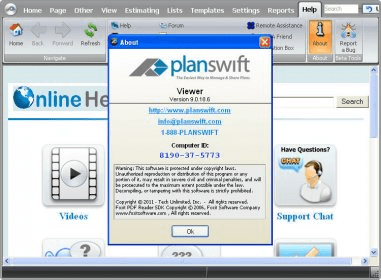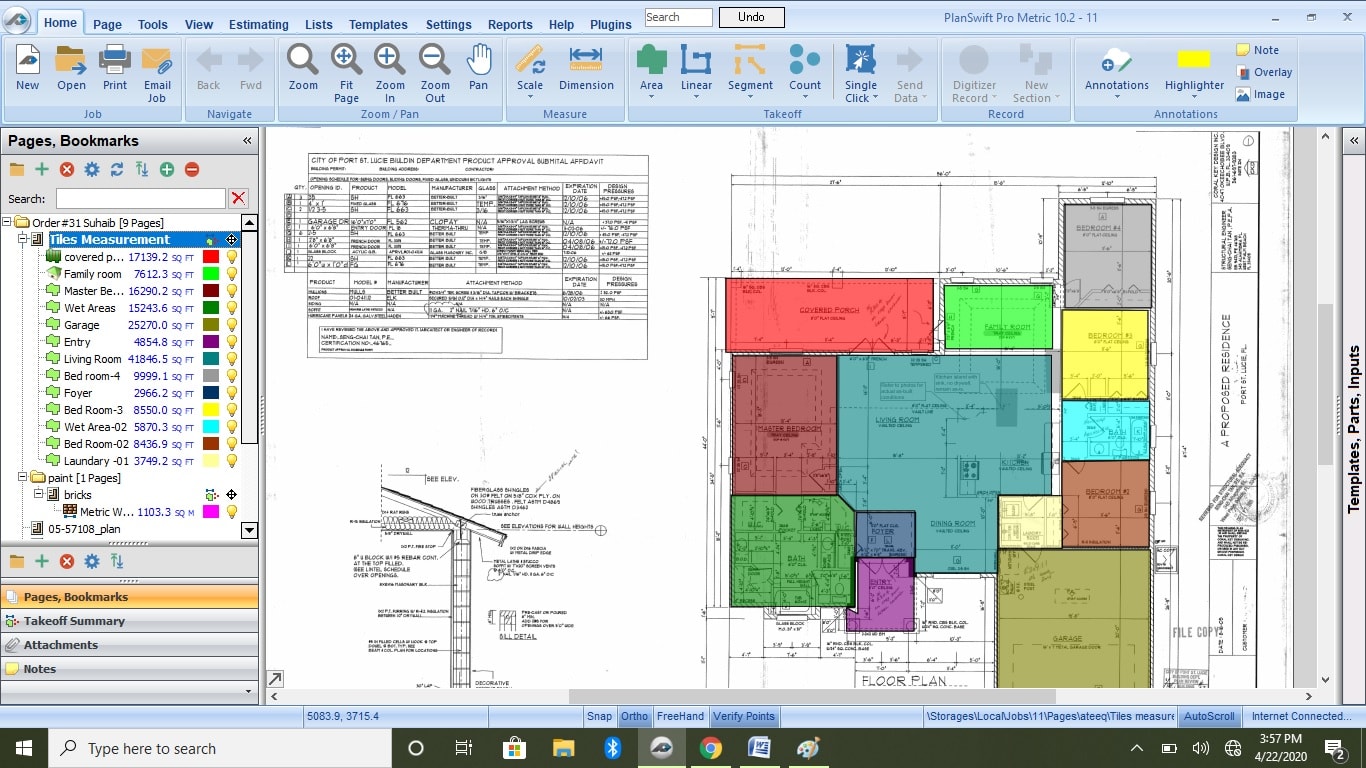
The more detailed and accurate you can be in the process of creating a takeoff, the better the end result will be. Here are a few tips for creating better, more accurate construction takeoffs. We’ve already established how important an accurate takeoff is to a successful project.
PLANSWIFT 10 REVISE PLAN HOW TO
Learn More How to do a construction takeoff: Tips for accuracy The estimator should take those values into account when submitting an estimate, but they won’t find them in the takeoff. It won’t include mobilization costs, labor, insurance, or other overhead costs attributed to the project.

Adding all of these costs will allow them to create an accurate construction takeoff for estimating purposes.Ī takeoff is only for materials, so it’s just one tool in the estimation process. By multiplying the unit of measurement used for each material with an accurate and up-to-date price, they’ll establish the cost for that particular material. Once the estimator establishes the types of materials and the quantities of each, including extra units to account for wastage.the cost in the takeoff. Standardized materials, like lumber, conduit, wire, ductwork, and pipe are typically listed by linear foot. By volumeĪ takeoff will usually list bulk materials like concrete, sand, and gravel by cubic foot or cubic yard. Other items, like flooring, drywall, sheathing, and roofing, are typically included in a takeoff by square foot. Individual items like standard wall studs, light fixtures, outlets, air handlers, windows, doors, and other similar items are simply counted. The measure of each material will correlate to the way it is typically sold. Measuring materialsĭue to the vast array of material types used on any given construction project, a takeoff will calculate material quantities using different measures: By unit, by area, by volume, or by length. Common items, like doors, windows, and electrical outlets typically use universal symbols so they are easy to identify. When working from a blueprint, the estimator can identify many of the materials called for by referencing the symbols used in the drawings. They’ll do the same for lumber, breaking each board down by dimension (2×4, 2×6, etc.), length, as well as the species and grades called for by the plans. The estimator will repeat this process for all of the materials required. By using the plans, the estimator will break pipes down by diameter, material, and length.

It will include the quantities and costs of things like lumber, concrete, roofing, blocks, pipes, wire, as well as fixtures and flooring.īecause it’s so important that a takeoff be accurate, it should include all of the important construction specifications.įor instance, a takeoff will not simply say “pipe” with a quantity next to it. Items included in a material takeoffĪ material takeoff includes all of the materials necessary to build a project according to the blueprints. If they do a poor job, they’ll miss materials or make mathematical errors, resulting in too much material, too little, or none at all.Īn inaccurate takeoff can destroy a project’s timeline and profitability. When the estimator takes their time and accounts for all the materials needed, they can create an accurate estimate that helps protect the contractor’s bottom line. By multiplying the number of materials by a unit price, the estimator can establish the overall cost for items like lumber, flooring, ceiling tiles, drywall, and other materials vital to the completion of the project. The construction takeoff also helps to establish the cost of each of the materials. By carefully measuring walls, floors, pipes, electrical conduits, and other items based on these plans, they can determine with great accuracy how much of each item they’ll need. They do this by “taking off” the materials from the blueprint.

When an estimator receives a set of plans or drawings, they need to determine which materials are necessary to actually build the project and in what quantity. An estimator will prepare an estimate based on the material takeoff, so it’s crucial that it be as accurate as possible. Preparing a material takeoff is one of the most important steps in a project, and an integral part of developing a construction estimate. The term takeoff refers to the estimator’s process of “taking materials off” of the drawings and recording them in a list. In construction, a takeoff is a document that lists all of the materials required on a project and their associated costs.


 0 kommentar(er)
0 kommentar(er)
